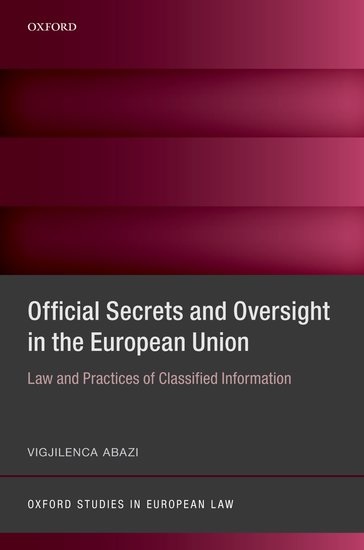Official Secrets and Oversight in the EU - Law and Practices of Classified Information
Vigjilenca Abazi
Disponibilité: En rupture de stock - disponible sous 10 jours
- Catégories: Pour les étudiant.e.s et les praticien.n.es, April 2019
- Editeur: OUP - Oxford University Press
- Collection: Oxford Studies in European Law
- ISBN: 9780198819219
- Date de publication: 09/04/2019
- Reliure: Paperback
- Nombre de pages: 224
Résumé
This monograph offers a uniquely comprehensive and in-depth legal
account of official secrets in the European Union. It critically
analyses their implications for oversight and fundamental rights. Based
on forty interviews with practitioners and other stakeholders, it offers
an understanding of the practices of official secrets and provides a
critical and much-needed perspective on how parliamentary, judicial and
administrative oversight institutions deal with access to classified
material and the dilemma of oversight to concurrently ensure secrecy
necessary for EU security policies and openness needed for democratic
processes and fundamental rights.
The book discerns shifts in
institutional practice of oversight at the European Parliament and the
Court of Justice of the European Union that disproportionately favour
secrecy and the protection of classified documents while creating
serious limitations to open democratic deliberations and access to
justice, and delivers new insights on the EU's development as a security
actor as well as its autonomy from Member States, showing how rules on
official secrets were a means for the EU to gain more autonomy in
external security cooperation.
Table des matières
Introduction
1: The Oversight Dilemma and Democratic Constraints of Official Secrets in the EU Constitutional Context
2: EU Regulation of Official Secrets
3: EU Practices of Official Secrets: Administrative Discretion in Practice Introduction
4: Access to Official Secrets and Reviewing Executive Secrecy
5: Closed Parliamentary Oversight and Secret Evidence in EU Courts
Conclusions
